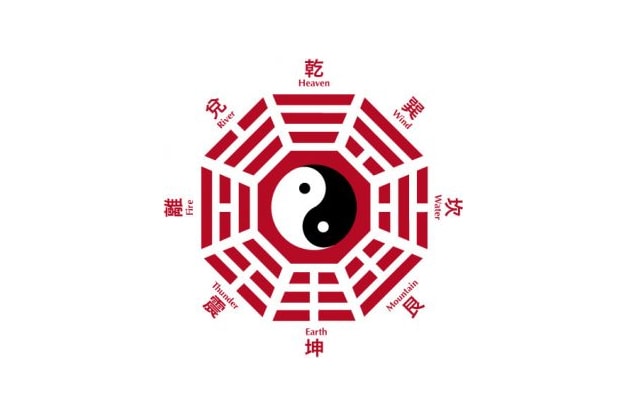
The bagua simply means the ‘Eight Trigrams’ or ‘the eight sided figure’. Sometimes, the symbol is rendered as Pa–kuaamong Chinese contemporaries. In this sense, Pa is said to refer to the number eight (8), while Kua has to do with hanging like in the case of a hanging wall picture. Such a picture will subtly mean someone had to keenly observe or watch the hanging picture in order to discern its presence and symbolism. This denotes the idea that at all times, upon close scrutiny;there are eight phenomena in existence and hanging in the universe. These are the eight facets or attributes that constitute the Pa- kua symbol.
Origin
The origin of Bagua has been speculated to have come from two possible sources. The first is said to have emanated from the Yin and Yang philosophy (as explained by Fu xi) and the second from the Zhou king named King Wen (which placed emphasis on the environmental changes). The former bespeaks of the wuji as being virtually limitless. Wuji gives rise to youji (delimited) which compared only to the absolute Taiji. Taiji, further results in the formation of two forms (Liangyi) which in turn cause four phenomena which again in turn exert action on the bagua trigrams to give rise to the 64 hexagrams.
King Wen of Zhou, on the other hand, posits that Heaven (Quian- gua) and Earth (Kun- gua) were in existence when the world began. The two fused in mating to bring to birth all phenomena that exist today. Out of the eight, the remaining six phenomena were considered sons and daughters of Quian- gua and Kun- gua.
Description & Usage
The symbol is used to represent the basic facets of reality that is deemed to exist as a fusion of eight different concepts. Each of the eight is further expressed in three lines, hence the term ‘trigrams’. The trigrams are each named and associated with a different attribute. Each line may be broken or not, representing yin or yang, and hence the phrases yin lines and yang lines.
Before further effort is rendered in understanding the whole picture of the symbol, it is important to, at ts point, point out that the eight attributes that were perceived to be as being evidently hanging on a wall (called the universe) include:
- The Sky
- Earth
- Wind
- Thunder
- Fire
- Water
- Mountain
- Marsh (Water body)
Ostensibly, the actual conception, design and development of the symbol was done at a time when written languages were unheard off. As a result, it is opined that some gifted Chinese ancestor came up with an idea of representing the symbol using nothing but a line system. In the system, a solid line (yang line) stood for notions such as motion, elevation or as an indication of strength in given images. The yin lines, on the other hand, evoked the image of motionless states, depression and or weakness in images. In that system, the ensuing bigram of the yang and yin lines needed an additional yon or yang line and the result became the Pa- Kua. The Sky was, for instance, represented by three solid lines horizontally laid in a parallel state while the Earth was represented by three broken lines laid in similar manner. The other eight phenomena were represented by varying combinations of solid and broken lines.
Further, the eight trigrams are order in two ways: the pre-heaven baa (Fu Xi bagua)and the post heaven bagua (King wen bagua). Chinese scholars point to the fact that it is erroneous to simply translate the two as being ‘earlier version or later version Pa kua respectively’. This is tied to the idea that the Chinese character for day also refers to sky and heaven. Nevertheless, the former casts a complete picture of the Universe. In this arrangement, the Sky is opposite to the Earth and so is the Wind arranged against Thunder. The mountain and Marsh are similarly arranged just as Fire placed opposite Water. The post heaven Pa- kua, on the other hand, was rearranged for purposes of ease of usage in other contexts such as the FengShui.
Conclusion
Simply stated, the bagua or pa- kua can be said to have been an instrumental symbol that sought to explain how everything in the world started. Even in the ensuing variations relating to what exactly each phenomena does may not be meaningful in an already logical explanation for the start of the world. What remains to be seen would be perhaps the consideration of the meaning of the symbol in light of the tremendous changes in the world today.

